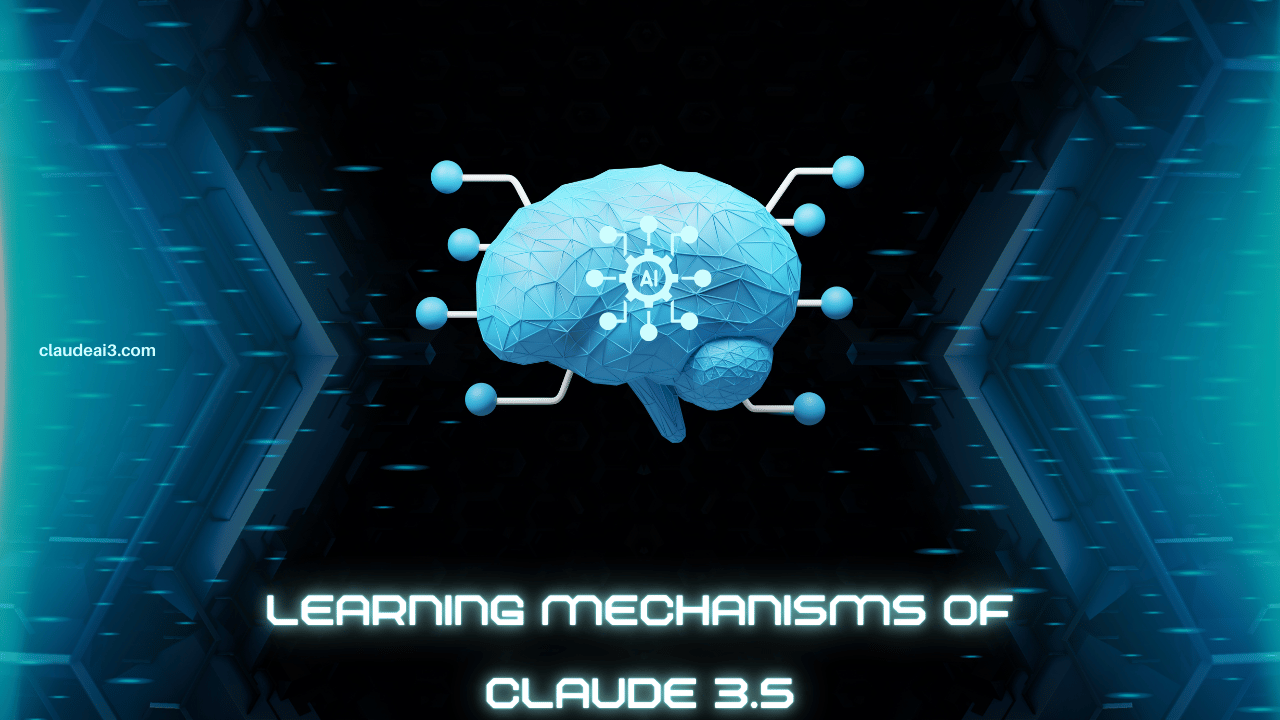Claude 3.5’s learning mechanisms are built upon cutting-edge neural network architectures, optimizing how the model learns and improves over time.
In this article, we delve into the intricacies of its learning process, examining key components such as pre-training, fine-tuning, reinforcement learning, and the role of memory in shaping its performance.
The Foundation of Claude 3.5
How Does Pre-Training Work?
Pre-training forms the backbone of Claude 3.5’s learning mechanism. The model undergoes a rigorous process of consuming large datasets, learning language patterns, syntax, and semantics. This phase involves:
- Massive Text Corpora: Claude 3.5 is trained on a diverse range of texts, from books and articles to online conversations.
- Tokenization: The text is broken down into smaller units called tokens, allowing the model to understand language at a granular level.
- Masking and Prediction: The model learns by predicting masked tokens, enhancing its ability to fill in missing information in a given context.
Key Benefits of Pre-Training
- Language Understanding: Helps the model grasp complex linguistic structures.
- Contextual Awareness: Improves the model’s ability to understand context and generate relevant responses.
Fine-Tuning
What is Fine-Tuning?
Fine-tuning involves training Claude 3.5 on specific datasets to optimize its performance for particular tasks. This phase tailors the model to excel in specialized domains such as healthcare, legal, or academic research.
Fine-Tuning Techniques
- Supervised Fine-Tuning: Uses labeled data to guide the model’s learning process.
- Domain-Specific Training: Focuses on datasets relevant to specific industries or applications.
Examples of Fine-Tuning in Action
- Healthcare: Understanding medical terminologies and assisting in diagnostics.
- Legal: Analyzing legal documents and providing case summaries.
Reinforcement Learning
How Does Reinforcement Learning Work?
Claude 3.5 employs reinforcement learning to improve its decision-making capabilities. By interacting with environments and receiving feedback, the model learns to optimize its responses over time.
Key Components of Reinforcement Learning
- Reward Signals: The model receives positive or negative rewards based on its output quality.
- Policy Updates: Adjusts its internal parameters to maximize rewards.
- Exploration vs. Exploitation: Balances exploring new possibilities with utilizing known strategies.
Real-World Applications
- Customer Support: Improving response accuracy and relevance.
- Content Generation: Producing high-quality, coherent content tailored to user preferences.
Memory and Context Retention in Claude 3.5
The Role of Memory
One of the standout features of Claude 3.5 is its memory capability. The model can retain context across interactions, allowing for more personalized and coherent conversations.
How Memory Works
- Short-Term Memory: Retains information during a single interaction.
- Long-Term Memory: Stores information across multiple sessions to provide continuity.
Advantages of Memory in AI
- Enhanced User Experience: Personalized responses based on previous interactions.
- Improved Accuracy: Retains critical information, reducing the need for repetitive inputs.
Continuous Learning
Why Continuous Learning is Essential
In a rapidly evolving digital landscape, AI models must adapt to new information. Claude 3.5 incorporates continuous learning to stay updated and relevant.
Techniques for Continuous Learning
- Incremental Updates: Regular updates to the model’s knowledge base.
- Feedback Loops: Using user feedback to improve future interactions.
Challenges and Solutions
- Data Drift: Addressing shifts in data patterns over time.
- Bias Mitigation: Ensuring the model remains unbiased and fair.

Ethical Considerations in AI Learning
Responsible AI Development
As Claude 3.5 learns and evolves, ethical considerations become paramount. The model’s learning mechanisms must prioritize user privacy, data security, and fairness.
Key Ethical Practices
- Data Anonymization: Protecting user identities during training.
- Bias Detection: Implementing measures to identify and mitigate biases in the model’s outputs.
- Transparency: Providing users with clear information about how the model learns and processes data.
Addressing Ethical Challenges
- User Privacy: Ensuring data used for training is anonymized and secure.
- Accountability: Holding developers accountable for the model’s behavior and decisions.
Practical Implications for AI Researchers and Developers
How AI Researchers Can Leverage Claude 3.5
- Experimentation: Conduct experiments to understand the model’s learning behaviors.
- Custom Applications: Develop custom AI solutions by fine-tuning Claude 3.5 for specific use cases.
- Ethical AI Development: Incorporate ethical guidelines to ensure responsible AI practices.
Tools and Resources for Developers
- API Access: Utilize Claude 3.5 through API integrations for various applications.
- Documentation: Comprehensive guides on how to leverage the model’s capabilities.
FAQs
1. How does Claude 3.5 differ from previous versions?
Claude 3.5 incorporates advanced memory retention, continuous learning, and improved decision-making capabilities compared to earlier versions.
2. Can Claude 3.5 be fine-tuned for any industry?
Yes, Claude 3.5 can be fine-tuned for specific industries, including healthcare, legal, finance, and more.
3. What ethical considerations are involved in AI learning mechanisms?
Key ethical considerations include data privacy, bias detection, and ensuring transparency in AI operations.
4. How does Claude 3.5 handle user feedback?
The model uses feedback loops to improve its responses and adapt to user preferences over time.
5. Is Claude 3.5 capable of continuous learning?
Yes, Claude 3.5 incorporates continuous learning techniques to stay updated and relevant.
Conclusion
Claude 3.5’s learning mechanisms represent a significant leap in AI capabilities, from pre-training and fine-tuning to reinforcement learning and memory retention.
These advancements make it a powerful tool for AI researchers, academics, and developers. By understanding its learning processes, users can better leverage Claude 3.5 for innovative applications, ensuring responsible and ethical AI development.
Explore Claude 3.5’s capabilities today and unlock new possibilities in AI-driven solutions!

